Birdwatching on Cape Clear Island, West Cork.Cape Clear Bird Observatory (Tigh na nÉan) was founded in 1959 by a group of four English birdwatchers who recognised the enormous potential Cape Clear Island offered for observing bird migration. Not only was the island in an ideal position for watching passing seabirds but it also attracted overshooting eastern and western migrating birds. Since those early days, the observatory has amassed a considerable list of Siberian and American rarities and the island remains the place in Europe from which to see Great Cories and Sooty Shearwaters from the southern hemisphere and Wilson's Petrels from the mid Atlantic. The observatory was housed initially in what is now the Youth Hostel and later moved to a building which became known as 'Stroma' among birdwatching enthusiasts from 1960 - 1963. Since then the observatory has been located at Trá Chiaráin. In 2000 the building came under the management of Bird Watch Ireland and major renovations were undertaken which has secured its long-term future. The aims of the observatory are to monitor migration, to provide education, and inexpensive accommodation for visiting birdwatchers. Several courses are held by Bird Watch Ireland each year and these cover topics from ecology to seawatching. Birds can turn up anywhere on the island and they are frequently observed in the most unlikely places. There are however, a few 'hotspots' to start from. All of these can be viewed from the roadside and there is no need to encroach on these areas, thus leaving the birds undisturbed. 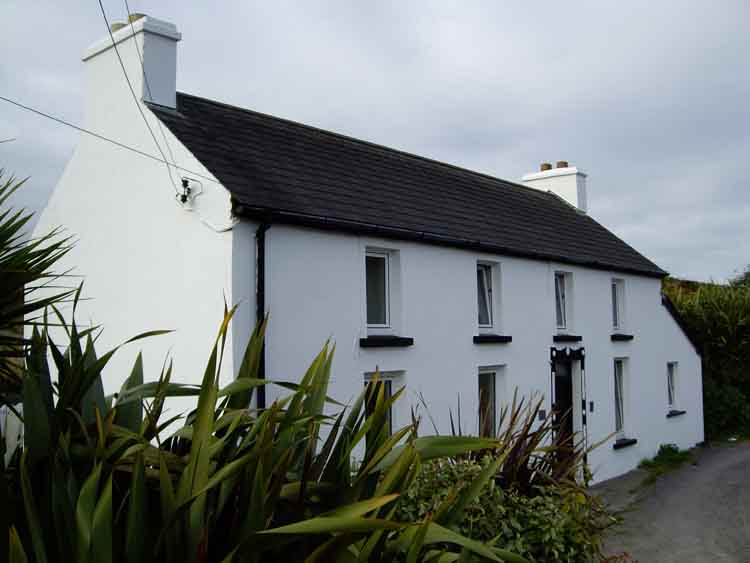
Cotters GardenThe garden behind Cotter's Bar is a sheltered haven from the stormy plateau for tired migrants during spring and autumn. Species to look out for here are Chiffchaff, Blackcap, Garden and Willow Warblers, Goldcrest, Firecrest along with Spotted and Pied Flycatchers. This particular site has hosted such rarities as Yellow-bellied Sapsucker and Blue-winged Warbler, both from the United States and both being the first records of the species on this side of the Atlantic. Thrush GlenJust over the hill at Comar (Cummer), beyond Ciarán Danny Mike's Bar in Gleann na Smóil is a small wooded area. Planted just a few years ago by a group of birdwatchers form Northern Ireland, this area has become another hotspot. The small stream and mixture of Alders and Willows provide ample cover for Warblers and Thrushes, along with Water Rail and the occasional rarity. The Yellow-browed Warbler, a bird from Siberia that should have been heading for China, is almost an annual visitor to this small copse. A wooden bench below the bushes is an excellent spot for a snack, a rest, and to gaze out over South Harbour. From here it is possible to see Minke Whales, Common Dolphin, and Harbour Porpoise during the later summer months. Great Cories and several thousand Manx Shearwaters pass the entrance of the harbour at this time. Binoculars or a telescope are really necessary to view these, although that could be said for all birdwatching! Old Post OfficeThe old Post Office has a stand of pine trees. Blackcaps, Willow Warblers, Common Whitethroats breed in the bramble thickets and Garden Warblers are common visitors. During the late autumn months this is the best place to see Redwings and Fieldfares, along with other migrating thrushes. Lough ErrulLoch Ioral (Lough Errul) is a good spot to brush up on gull identification, with Great Black-backed, Lesser Black-backed and Herring Gull all using the fresh water to wash the salt from their feathers. Little Grebes visit during the winter months and Mallard use the lake all year round.
Lighthouse RoadThe gardens of the Lighthouse Road have long been regarded as an arrival point for migrant birds and are well worth a look. Warblers frequent all of these gardens and almost any kind of bird can arrive there. LighthouseThe magnificent views from the Old Lighthouse are worth the walk and the hilltop is an excellent spot from which to look for whales, dolphins, porpoises and seabirds. PointabulligPointe na Boilge 'Pointabullig' is the eastern headland of South Harbour and, like the old lighthouse, is an excellent place to look for whales and dolphins as well as the occasional Leatherback turtle. It is the safest spot from which to witness the spectacular seabird migration during late July and August when as many as 3000 Manx Shearwaters pass every hour! Weather conditions and optical equipment are two very important factors in how many you see, but even on a calm sunny day without binoculars, several thousand should be visible. Below the point is one of the largest breeding colonies of Fulmar - one can spend hours watching them play on the updrafts around the cliffs!
From the moment one steps ashore on the island, birds are evident and this spectacle stays with you wherever you walk. Robins and Stonechats are everywhere, along with Blackbirds, Song Thrushes and Dunnocks. Meadow Pipits can be seen and heard all over the western end of Cape Clear. Wheateaters and Redstarts can be seen on the stone walls alongside any of the roads with an occasional Black Redstart later in the year. Choughs, Ravens and Hooded Crows frequent the pastures and can be seen or heard just about anywhere. North Harbour is a good spot to listen for the plaintiff cry of the Chough above the hillside to the east. Black Guillemots can be seen at the entrance to the harbour sitting on the water or flying up to their nest sites carrying Butterfish to feed their young. The return boat trip is a good time to look for Gannets, Guillemots, Razorbills and Fulmars. They are all used to the boat and allow fairly close views as you pass.
For more information, follow this link: |
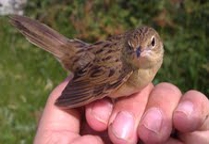
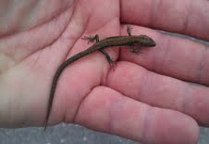
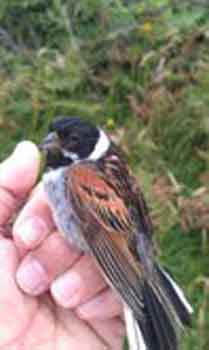
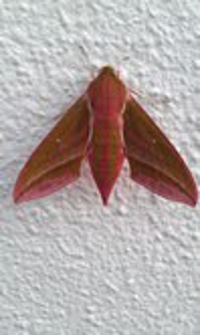

|


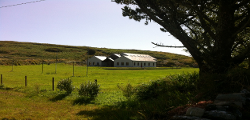
Cape News
The latest from Ireland's southern most island

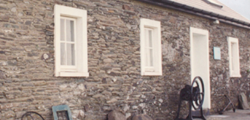
Fastnet Exhibition and multimedia display in the Heritage Centre
Heritage Centre

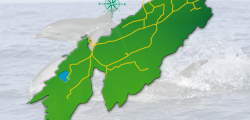
Locate places to go and see around Cape Clear Island
Search